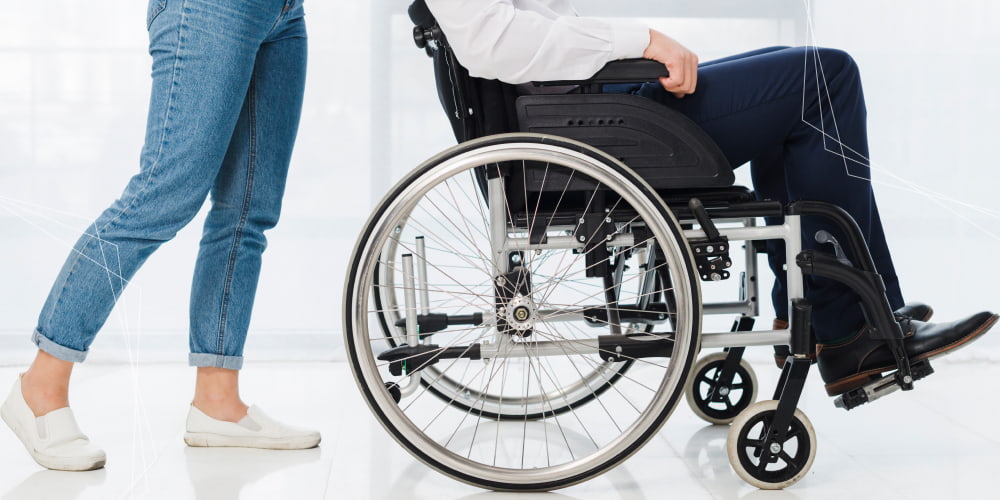Stroke is a hazardous medical occurrence that can be fatal for the patient. However, there is a massive chance of paralysis in the human body after the stroke. Paralysis is a condition when a person is unable to move their muscles.
The cause of stroke paralysis is a disruption in the transmission of neural impulses between the brain and the muscles.
In most cases, stroke paralysis affects the opposite side, where the stroke damages the brain. Ninety percent of all stroke-affected people get paralysis in one form or another. In this article, we created a list of causes, symptoms, and ways to prevent stroke paralysis in the first place.
What Causes the Stroke Paralysis?
Modern medicine knows three types of stroke attacks that can result in stroke paralysis:
Transient Ischemic Attack
Doctors know the transient ischemic attack (TIA) or “mini-stroke” as a warning sign that the full-blown stroke can occur in the future. The mini-stroke happens when there is no blood flow for our brain, and symptoms of this attack last for a short time.
Ischemic Stroke
The second in our list of things that can cause paralysis is ischemic stroke; this occurs when a blood clot blocks the blood flow to the brain. The vast majority of blood clots result from the accumulation of fat deposits inside a blood vessel. It is dangerous because the aforementioned fat deposits are prone to break off and stop the blood flow to the brain. However, there is the possibility that the blood clot was moved from one part of the body to another. This movement occurs due to the abnormal beating of the heart. If the mini-stroke can go away without therapy, the ischemic stroke requires immediate treatment. In this condition, the fat deposits break off and stop the blood flow to the brain.
Hemorrhagic Stroke:
Lastly, hemorrhagic strokes can cause paralysis. This stroke occurs when a blood vessel bursts or ruptures inside the brain and covers it with blood. Modern medicine divides hemorrhagic stroke into three distinct types:
- Aneurysm: This causes an invalid portion of the blood vessel to flare up and, at times, rupture too.
- Arteriovenous malformation: In this type, abnormally formed blood vessels can get ruptured and cause a hemorrhagic stroke.
- Bleeding in the brain: Due to high blood pressure, tiny blood vessels can get weakened, resulting in bleeding in the brain.
The main symptoms of Stroke Paralysis
There are situations when your friend or family member starts to behave strangely, and you are uncertain what is wrong with them. Look for signs of having a stroke. It is essential to do the necessary procedures simultaneously, thus paying attention to the following symptoms.
- Headache: It is common for patients with stroke paralysis to experience sudden headaches followed by dizziness, vomiting, or intermittent unconsciousness. The aforementioned could showcase that the person is having a stroke and will experience paralysis after that.
- Problems with speech: The next sign of having a stroke is confusion, slurring of words, and problems with comprehension of instructions.
- Numb body parts: If the person cannot move their legs, face, or arms, there is a high possibility that they are experiencing a stroke. This inability to move can occur to one arm, or leg, of the same side. Thus it will be hard to speak or smile.
Ways to prevent stroke paralysis
Modern medicine is pretty effective in the treatment of strokes. However, it is essential to prevent those mentioned above in the first place.
You can implement the following to prevent stroke:
- Know your risk factors of getting a stroke
- Follow doctor’s instructions
- Implement healthy habits
- Controlling blood pressure
- Avoid being overweight
- Stop eating so many products with cholesterol
The Longevity of Stroke Paralysis
Friends and family want to know how long their loved one will have stroke paralysis. However, there is no clear answer for this. Every stroke is unique, and every person that experiences a stroke requires distinct therapy to recover from it.
With proper rehabilitation, some patients may get better within six months, while others will require longer. The main thing for a successful recovery from paralysis in stroke is to carry out the doctor’s recommendations.
Schedule a consultation with Lone Star Neurology
A stroke is a severe clinical condition that can disable certain body regions. Knowing the signs and calling 911 can significantly lessen negative consequences. A person’s life may be saved if they seek medical attention early away, and their recovery from stroke-related paralysis will go considerably more smoothly.
Use this form to make an appointment with a Lone Star Neurology doctor if you are experiencing any troubling symptoms.
We provide a variety of medically trained professionals in different cities in Texas, including Dallas, Allen, Denton, Frisco and others. In our general neurology practice, we manage and treat various neurological conditions, such as migraines, seizures, MS, and stroke. This is not a complete list of everything we do.
FAQs
-
Is stroke paralysis permanent?
Depending on which portion of the brain is injured and how long the brain is without a blood supply, a stroke may result in temporary or permanent disability.
-
Can a person recover from stroke paralysis?
According to the National Stroke Association, up to 9 out of 10 stroke patients experience some degree of paralysis after their stroke. Even years after the stroke, treatment and rehabilitation can aid in regaining voluntary movement.
-
What kind of stroke causes paralysis?
Lastly, paralysis can result from hemorrhagic, ischemic strokes and transient ischemic attacks. This stroke happens when a blood artery inside the brain bursts or ruptures, oozing blood all over the place.
-
Can you walk again after a stroke?
Most patients can walk again within the first six months or, in situations where the mobility has been considerably restricted, within the first two years following their stroke. According to specialists, the degree of therapy after a stroke improves the probability of recovering function.
-
Are there warning signs days before a stroke?
The warning signals of an ischemic stroke may appear as early as seven days before an attack and need immediate medical attention to prevent severe brain damage.





 (8 votes, average: 4.38 out of 5)
(8 votes, average: 4.38 out of 5)






Please, leave your review
Write a comment: